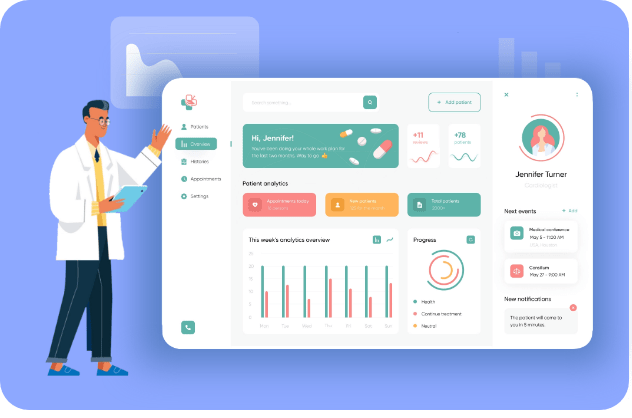Introduction
Communication between Doctor and patient is very important for the recovery of a patient. Remote monitoring devices avoids the back and forth travel of patients between hospital and their house. Their health condition can be regularly monitored by using remote devices and hospitalization of the patient can be prevented. Remote patient monitoring is shortly abbreviated as RPM and is a method of capturing patient’s health data. It captures all vital information of a patient such as BP, Sugar level, heart rate, etc. Remote monitoring has proved to be advantageous by reducing patient readmission and allow treatment sooner
Overview of market share
The global remote patient monitoring market is projected to reach USD 117.1 billion by 2025 from USD 23.2 billion in 2020, at a CAGR of 38.2% between 2020 and 2025. The factors that boost the demand for remote patient monitoring are a reduction in the number of health care staff and an increase in awareness of telemedicine. There is a growth in the market due to the efforts taken for the discovery of Innovative devices Patient remote monitoring is becoming a sturdy market
How remote monitoring Works
Even while at home patients can carry out their normal activities and monitor their health. The remote monitoring devices helps them to monitor their health and collect data These monitoring devices are integrated with patient monitoring apps. The apps transmits the data electronically to their Doctor Doctors then examine this patient data from a distance. In case of a patient who needs immediate treatment or attention, alerts are sent to the patient’s mobile and they receive it in the form of notifications. This remote monitoring technology helps to detect any issue at an earlier stage
What are the best features to have in remote patient monitoring apps
Some of the best to have features of remote patient monitoring apps
Notifications
Timely notification is an important feature of remote patient monitoring. Timely notification may prevent them from a serious illness. Also, notifications should be in sync for both patient and doctor
Integration with devices
Integrating with monitoring devices is an important feature. When integrated, the app will be able to collect data from these devices from time to time which might help to monitor progress over a period of time
HIPAA Compliance
Patient data is highly sensitive and it needs to be protected. It should be ensured that it meets HIPAA compliance Remote monitoring apps should have physical, network, and process security measures to ensure HIPAA compliance
Support for BLE
Remote monitoring apps need to support Bluetooth connectivity which is very essential for the transfer of data between monitoring devices and apps
Integration with doctor’s system
Integration with a Doctor’s system through secure API built on FHIR industry standard to ensure proper exchange of data between multiple systems is an important feature that needs to be handled

Tech Stack
Blockchain
The patient and Doctor are connected through voice and video calls. Encryption of patient data prior to transmission is very important. Blockchain technology is used for encrypting the sensitive patient data
Cloud Storage
Cloud services are used for storage of data as it improves privacy and security control of the app. Also, data retrieval is very quick from the cloud servers. So storage and transfer become efficient
Artificial Intelligence
Artificial Intelligence-based Chatbots are used for patients to get their queries answered as doctors are not available round the clock

